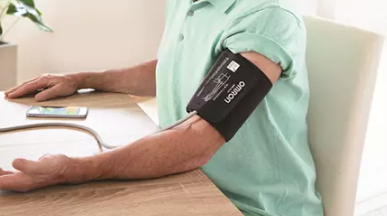Controlling blood pressure is crucial for maintaining overall health, and having a blood pressure monitor at home can aid in effective management. Here’s an overview of different types of blood pressure monitors, their features, and considerations for choosing the best one:
Features of the Best Blood Pressure Monitor:
- Accuracy: Provides precise readings for effective monitoring.
- Ease of Use: Simple operation for convenient home use.
- Comfort: Cuff design and inflation method should be comfortable.
- Memory Function: Stores past readings for tracking trends.
- Display: Clear and easy-to-read screen for quick interpretation.
- Power Source: Options for battery-operated or AC-powered monitors.
- Calibration: Capability for periodic calibration to maintain accuracy.
- Price: Affordable options that offer reliable performance and features.
Types of Blood Pressure Monitors:
-
Mercury Blood Pressure Monitor:
- Traditional device using mercury in a vertical tube.
- Accurate readings when properly maintained.
- Sensitive and fragile; requires careful handling.
- Long-lasting if handled with care, but prohibited in some countries due to mercury toxicity.
-
Aneroid Blood Pressure Monitor:
- No mercury; works without liquid.
- Consists of a cuff connected to a gauge to measure pressure.
- Comes in various types including pocket, palm, and standard models.
- Affordable and suitable for home use.
- Requires periodic calibration and verification by healthcare professionals.
-
Digital Blood Pressure Monitor:
- Advanced technology with electric pressure sensors.
- Provides digital display of blood pressure readings.
- Offers automatic evaluation and measurement of artery oscillations.
- Easy to use and suitable for home monitoring.
- Requires occasional verification with mercury devices for accuracy validation.
Choosing the Best Blood Pressure Monitor:
- Consider accuracy, ease of use, comfort, and affordability.
- Digital monitors are popular for home use due to convenience and reliability.
- Aneroid monitors offer a cost-effective alternative but require careful maintenance.
- Consult with healthcare professionals for guidance on selecting the best monitor.
- Periodically verify and calibrate digital monitors to ensure accuracy.
By understanding the features and types of blood pressure monitors, individuals can make informed decisions to effectively monitor and manage their blood pressure at home. Regular monitoring and consultation with healthcare professionals are essential for maintaining optimal health and well-being.


سلام، این یک دیدگاه است.
برای شروع مدیریت، ویرایش و پاک کردن دیدگاهها، لطفا بخش دیدگاهها در پیشخوان را ببینید.
تصاویر نویسندگان دیدگاه از Gravatar گرفته میشود.